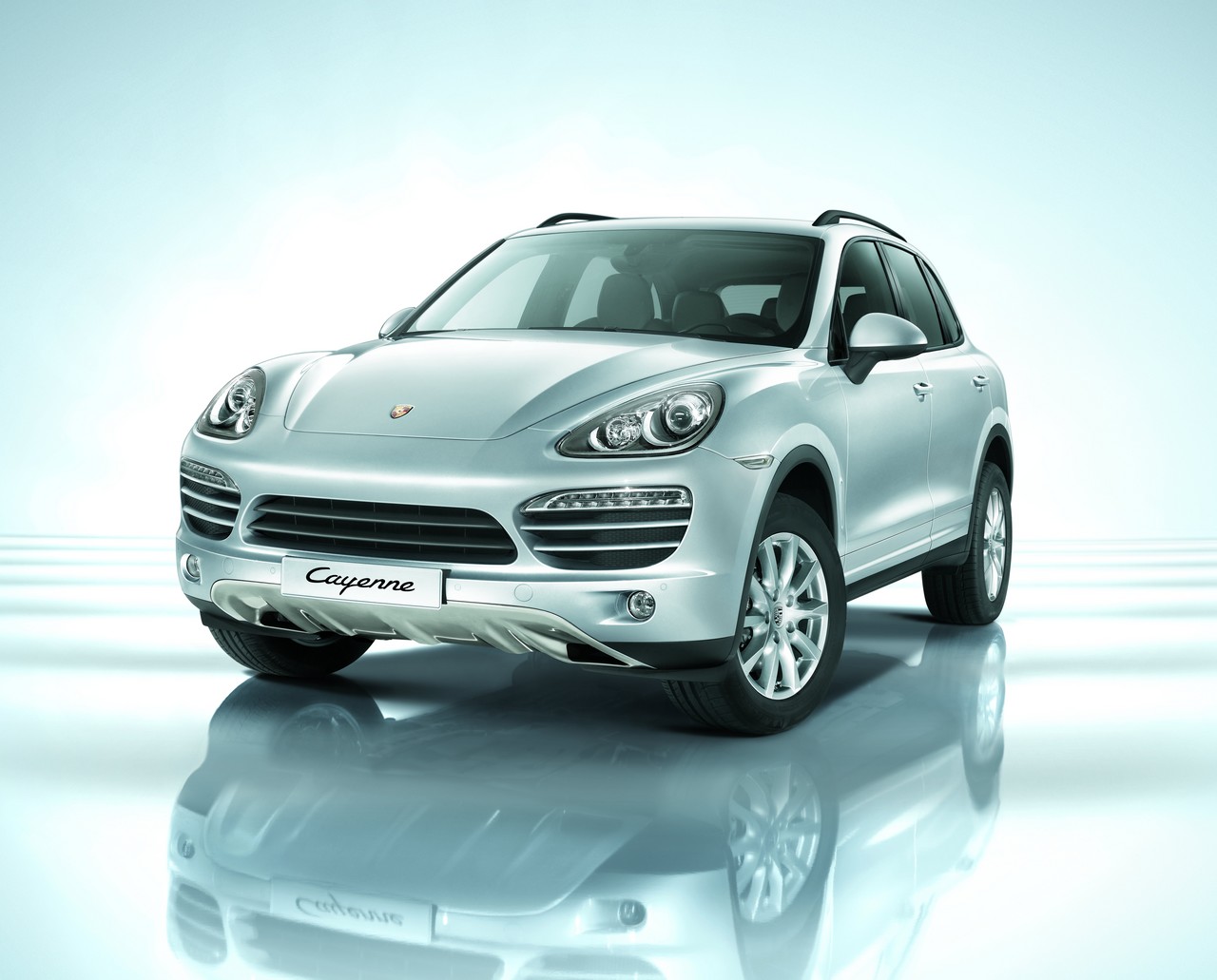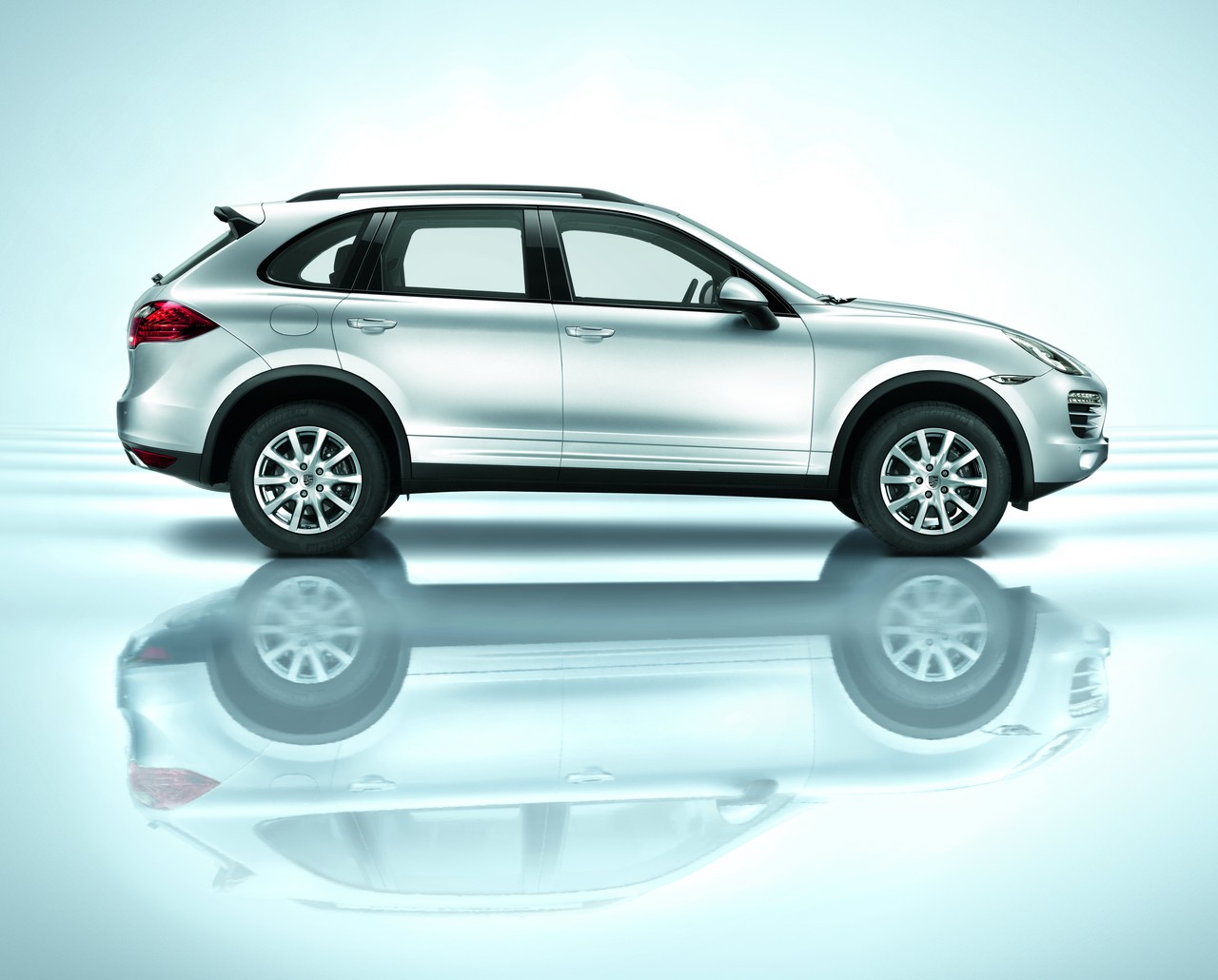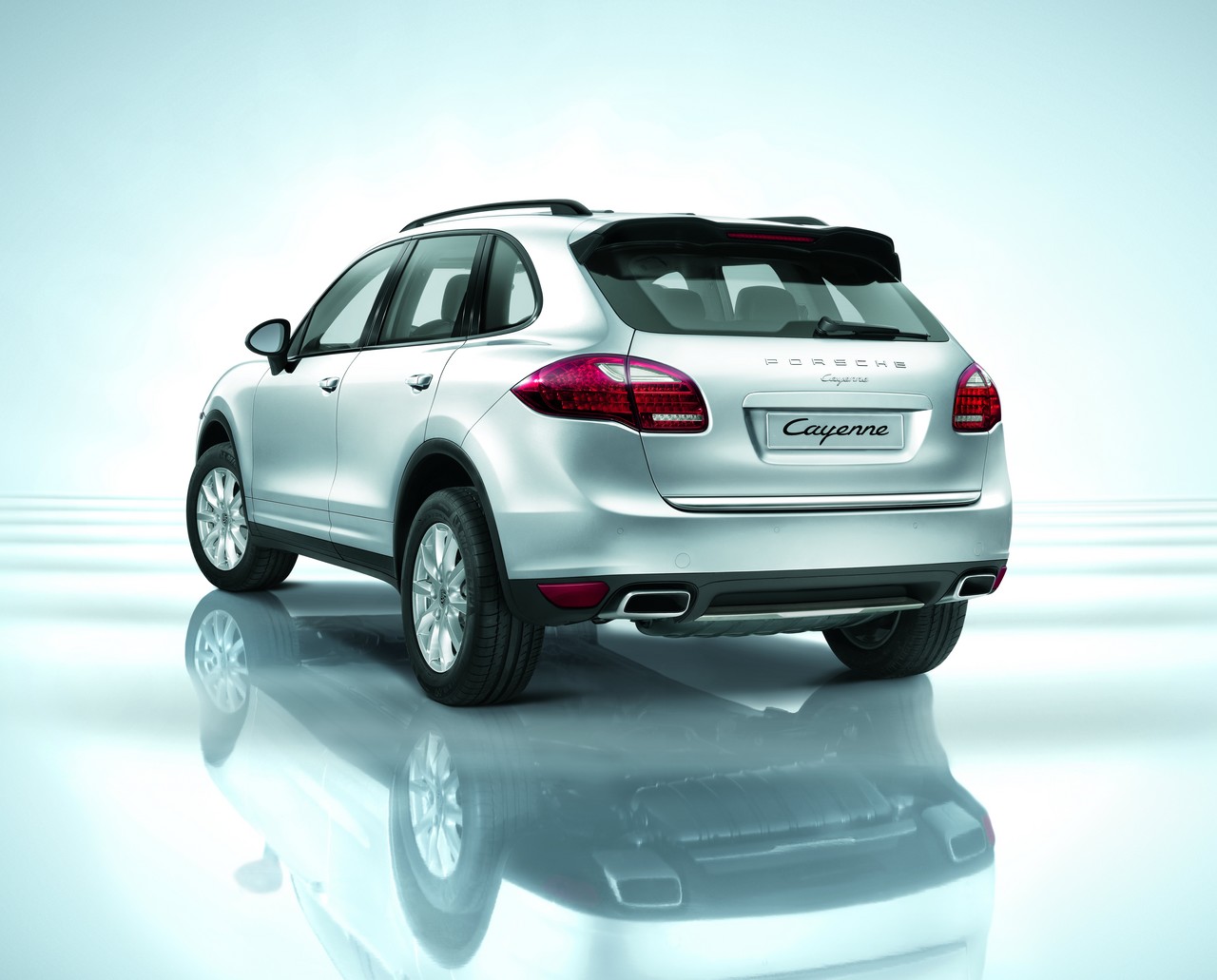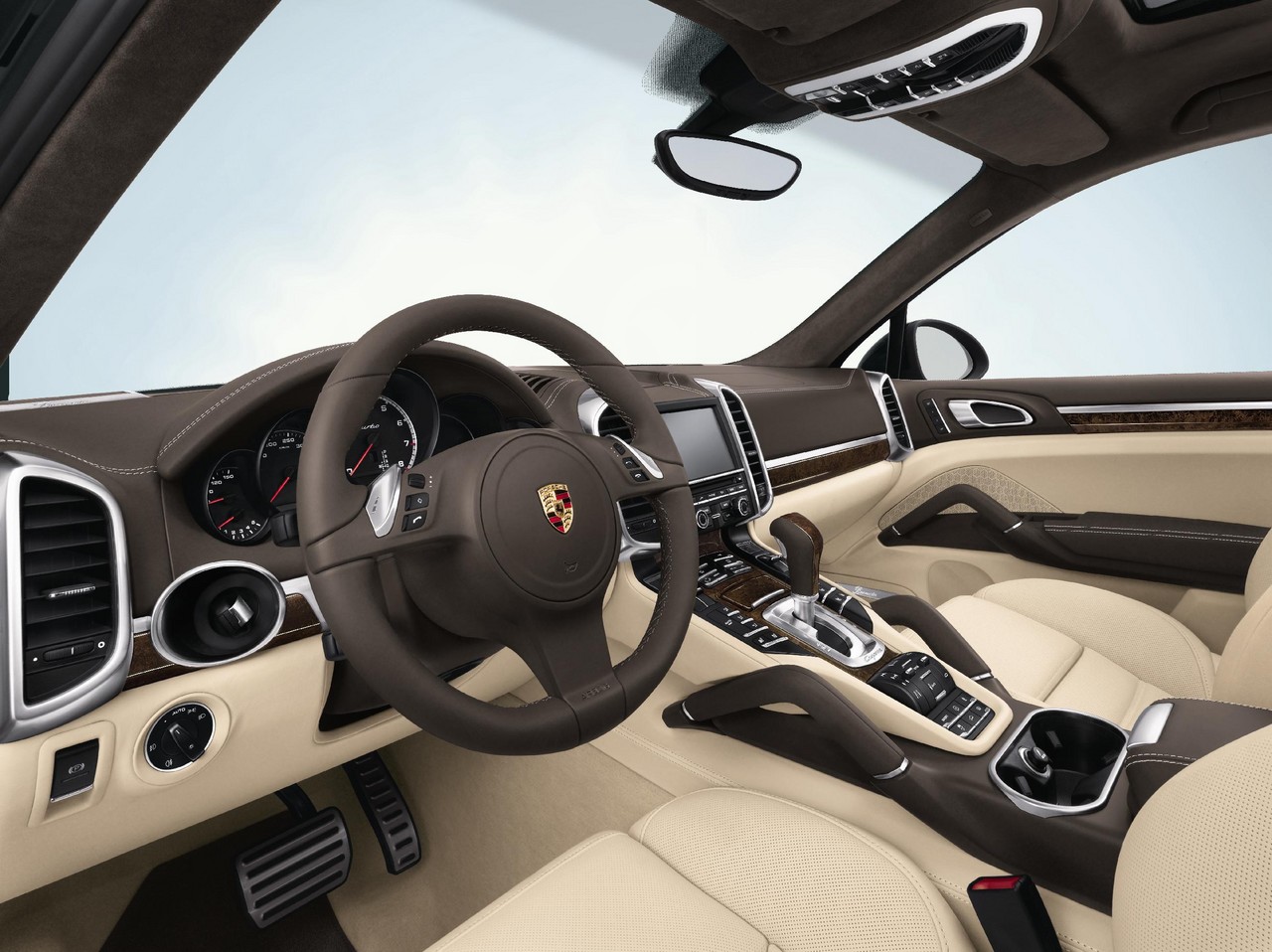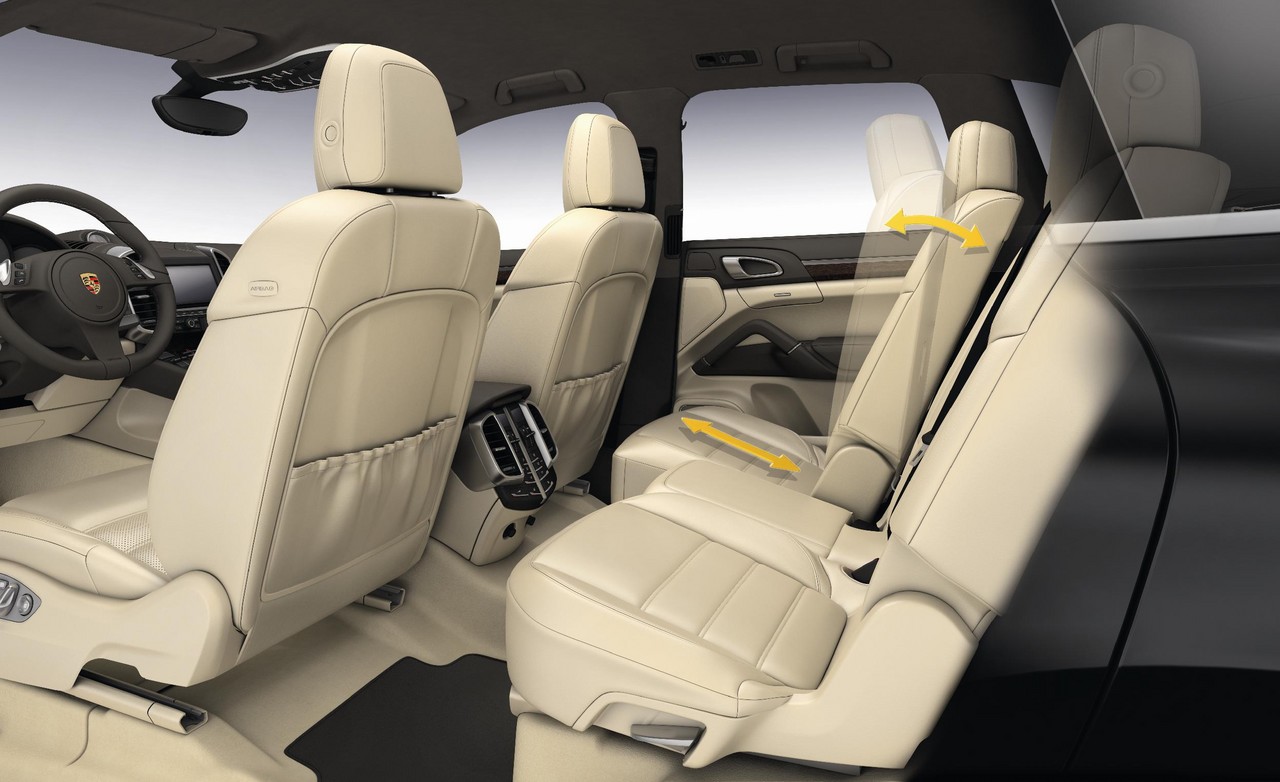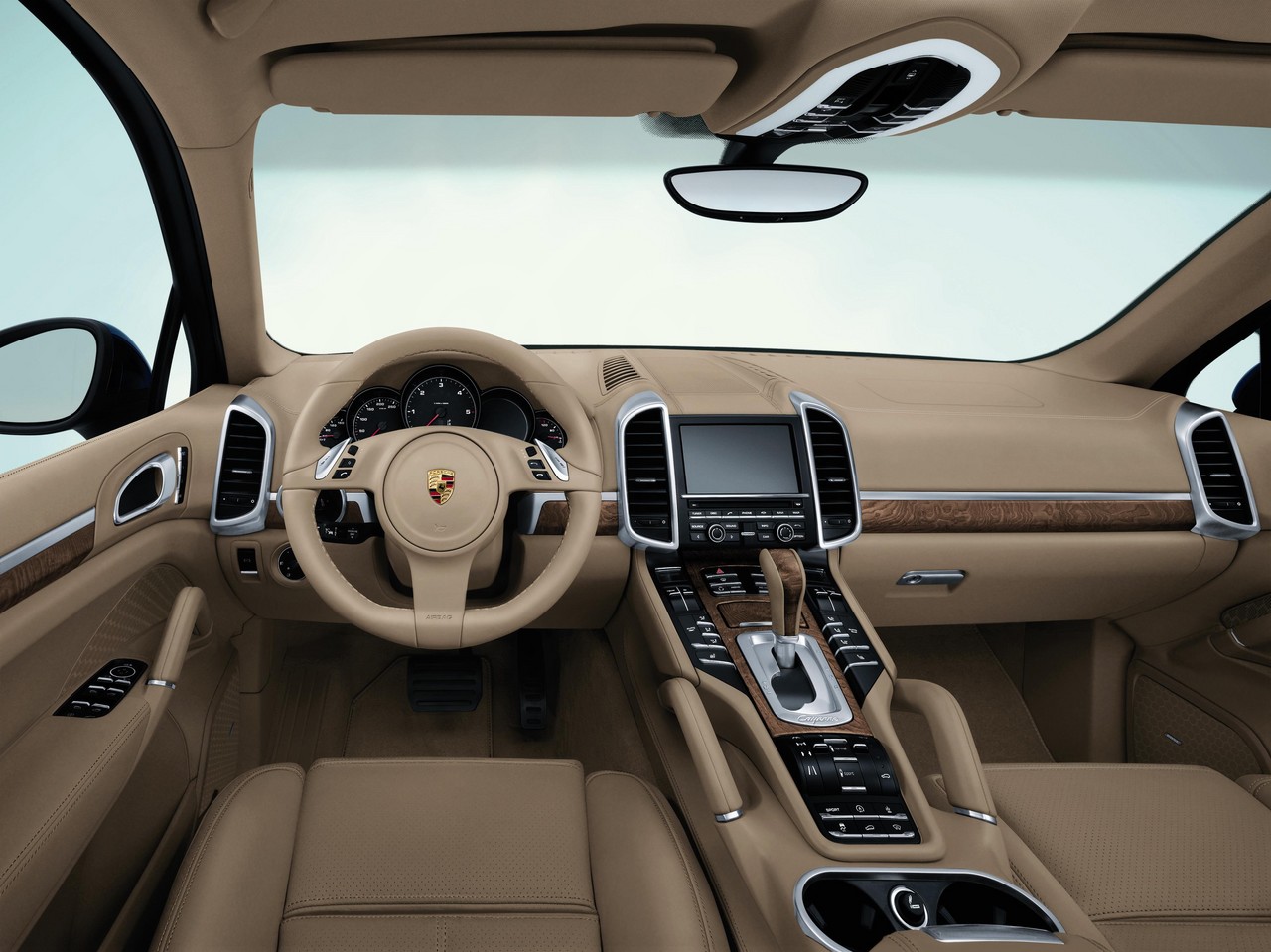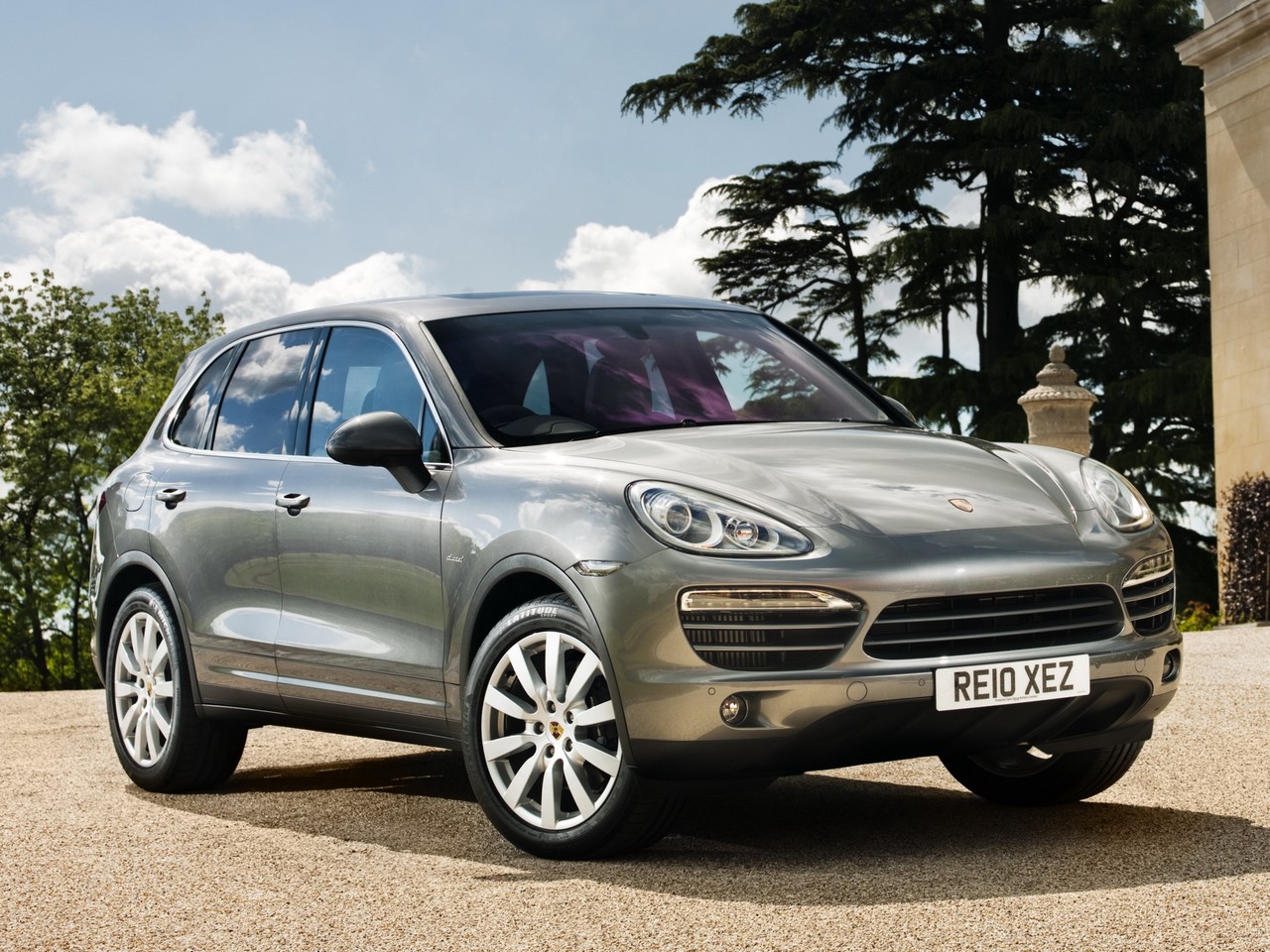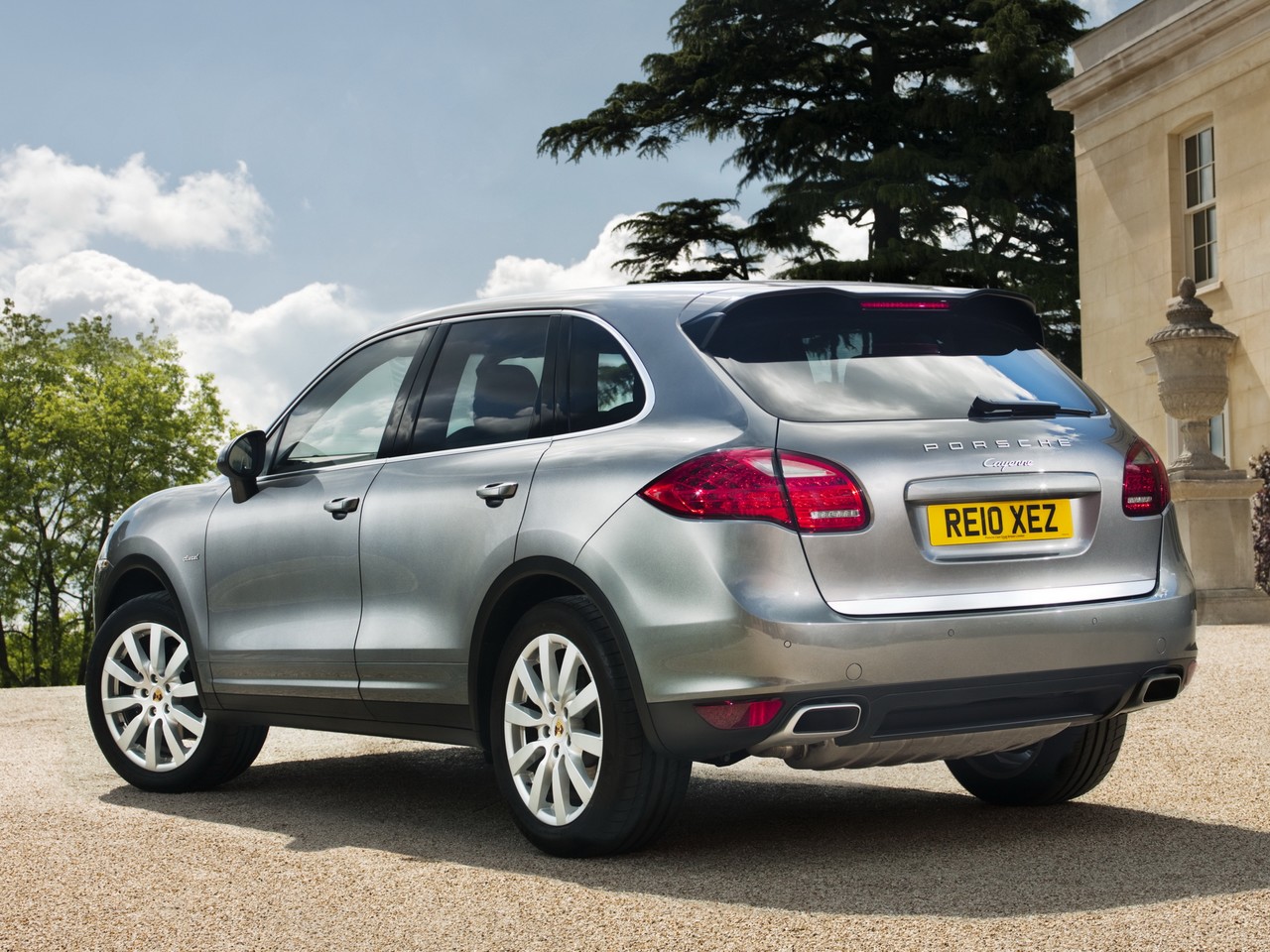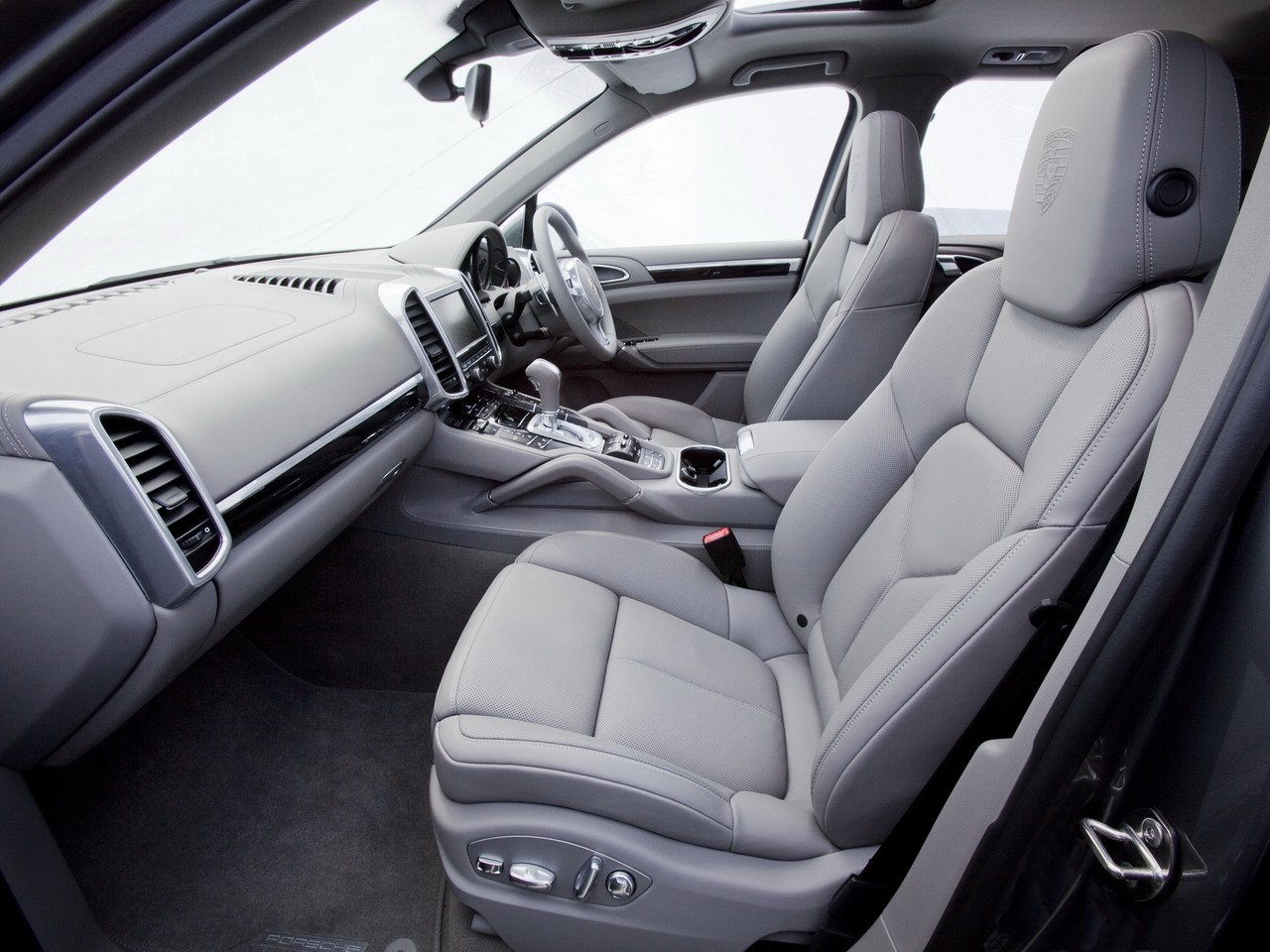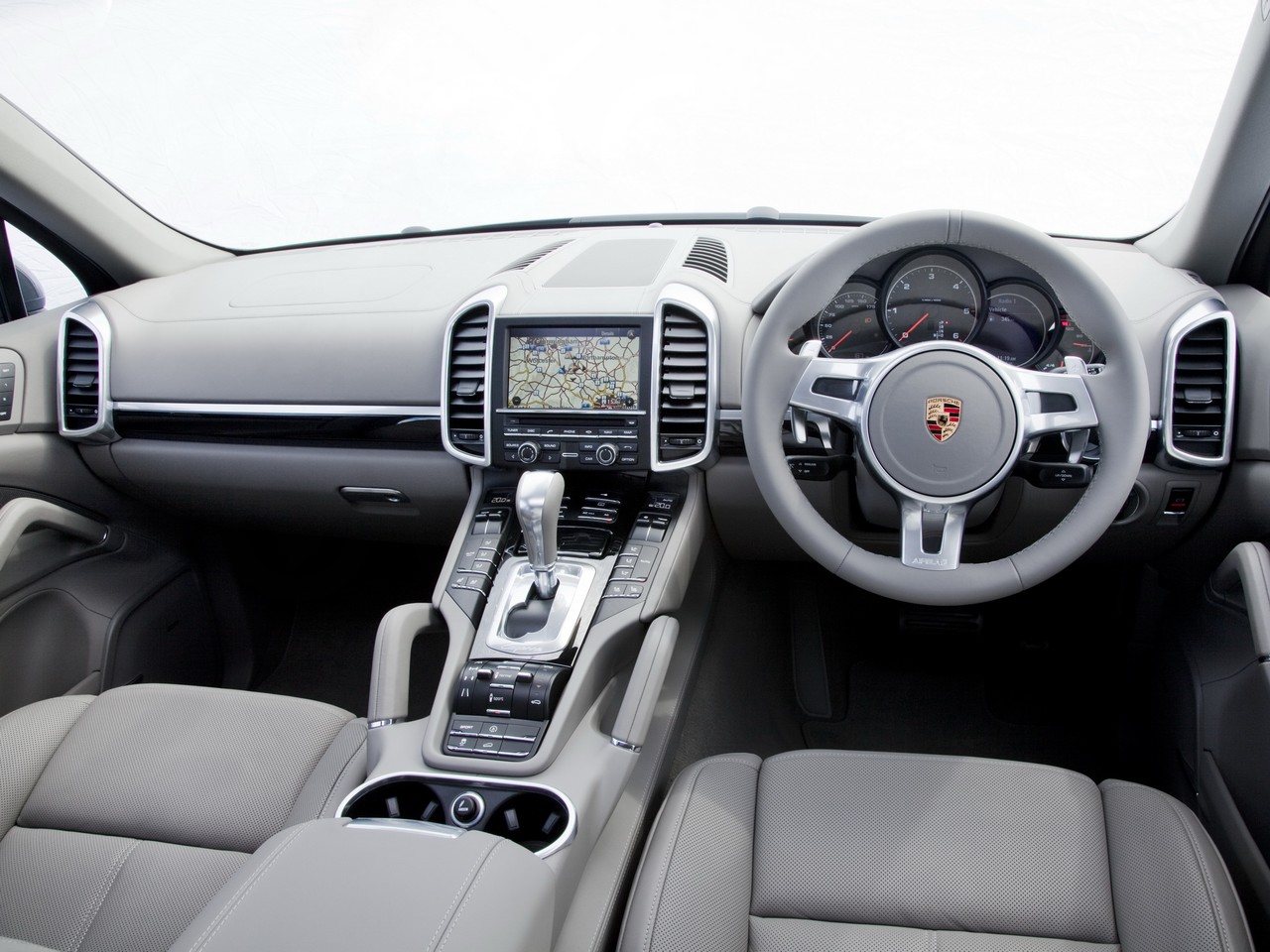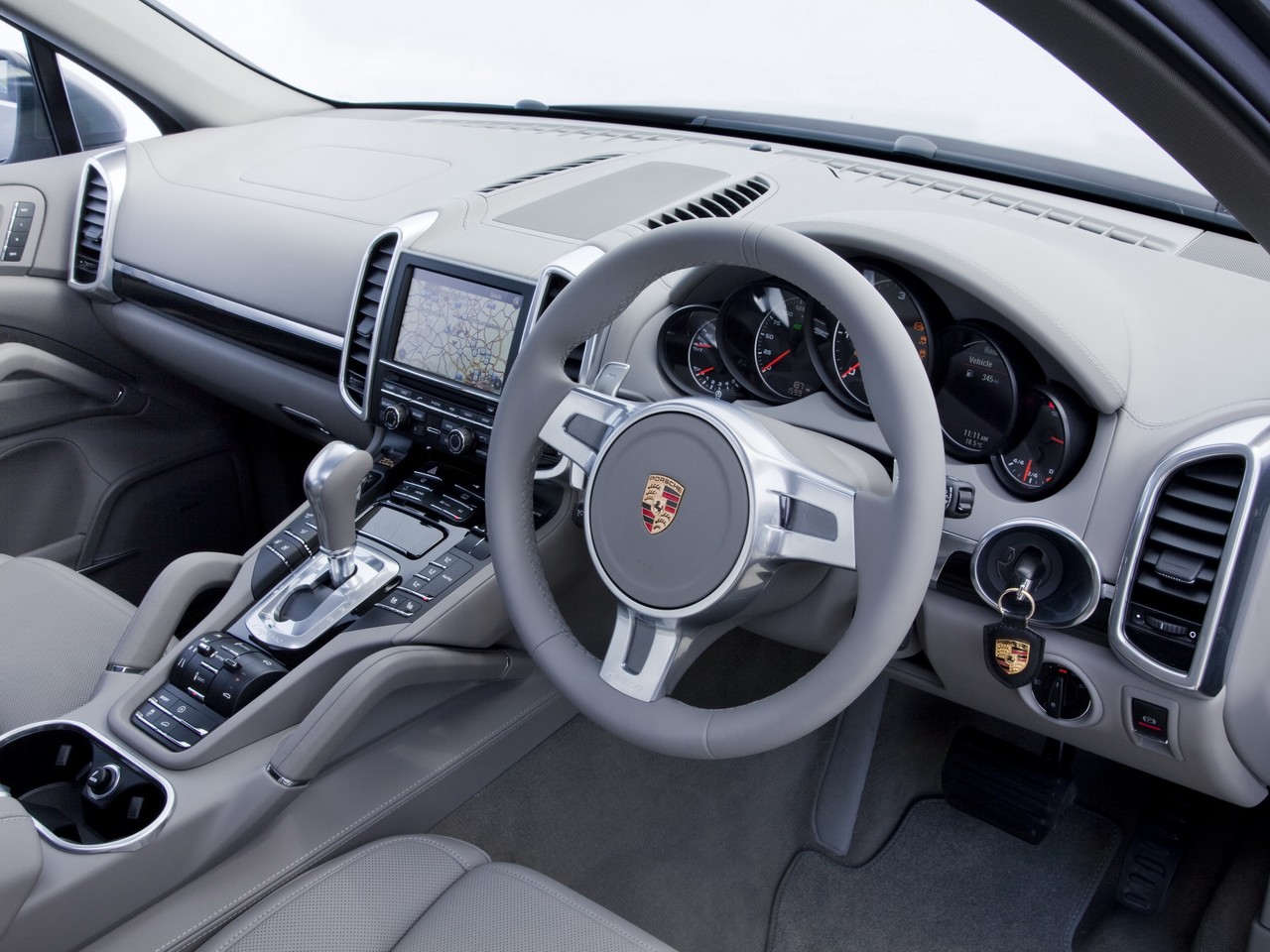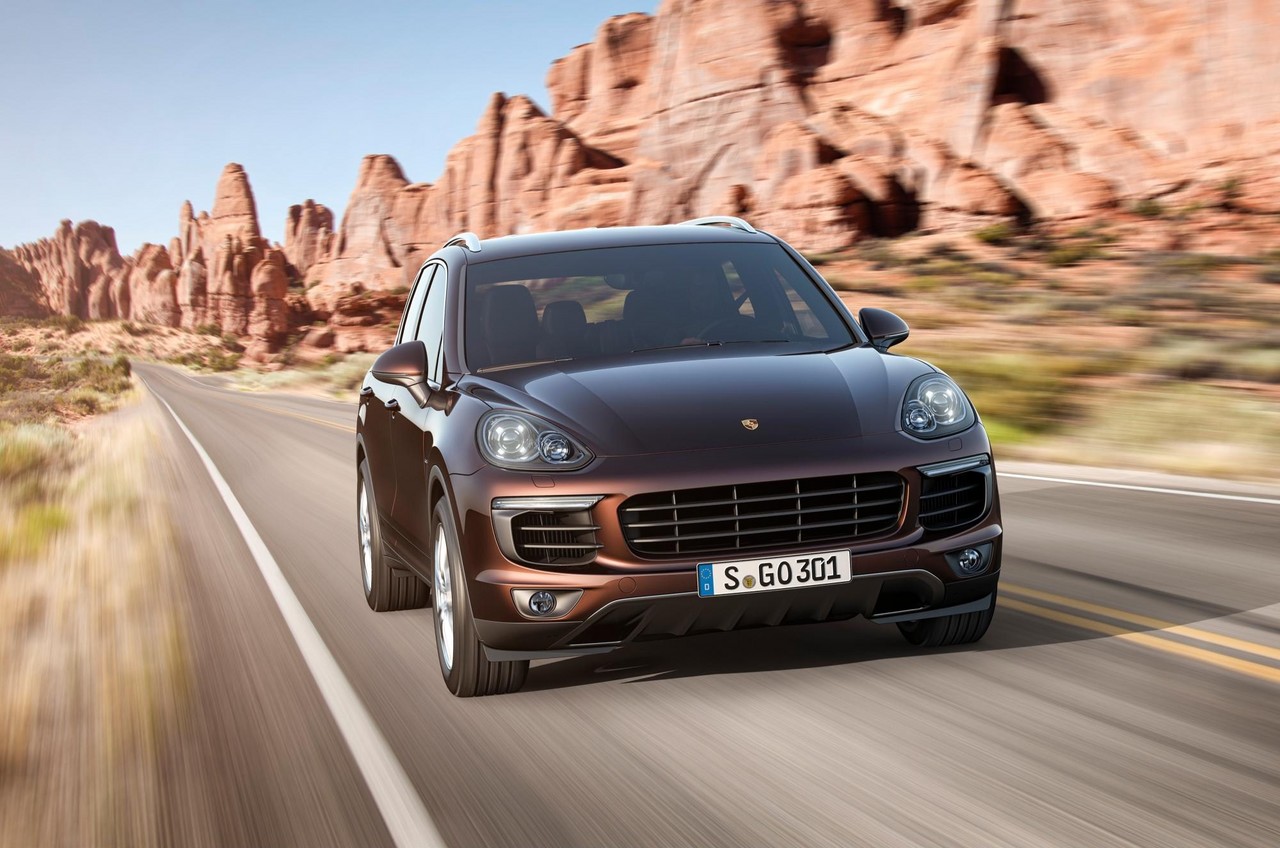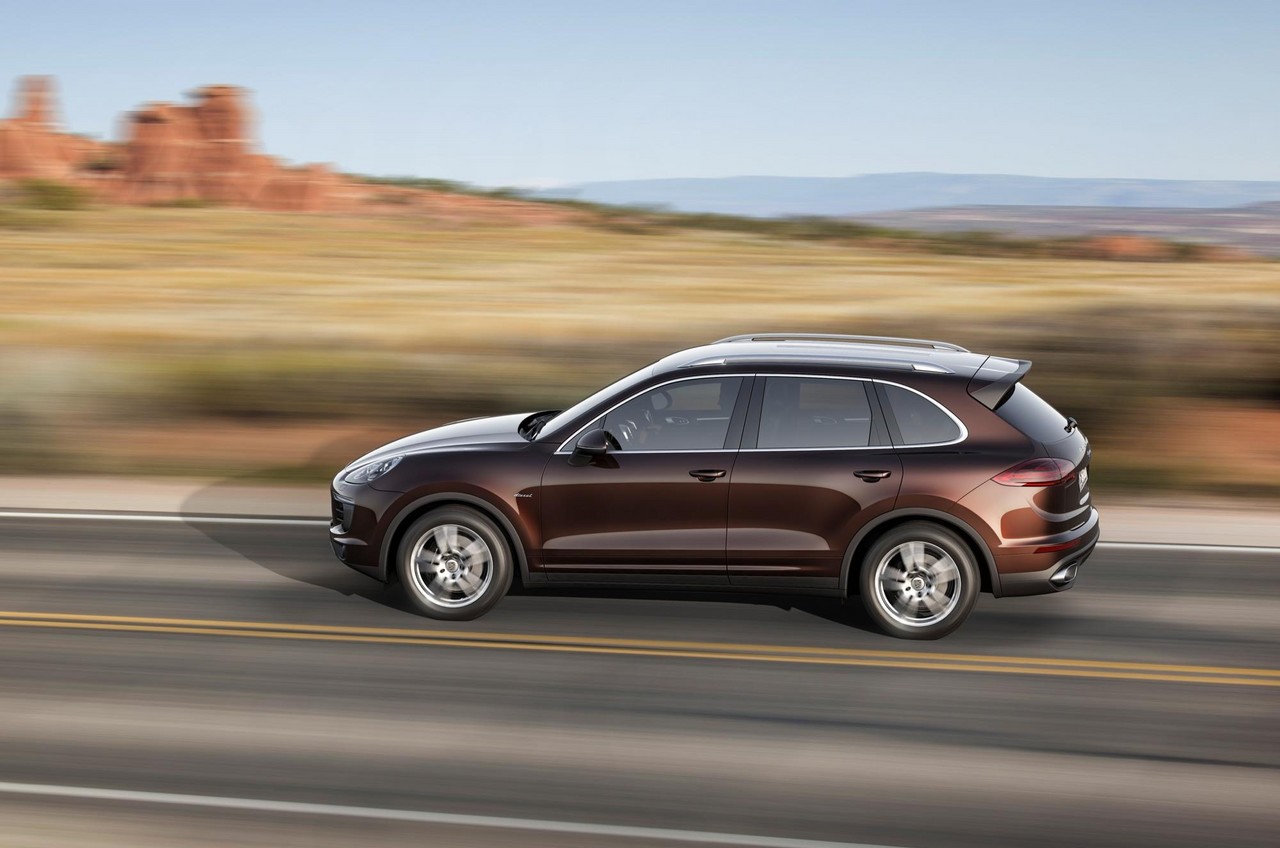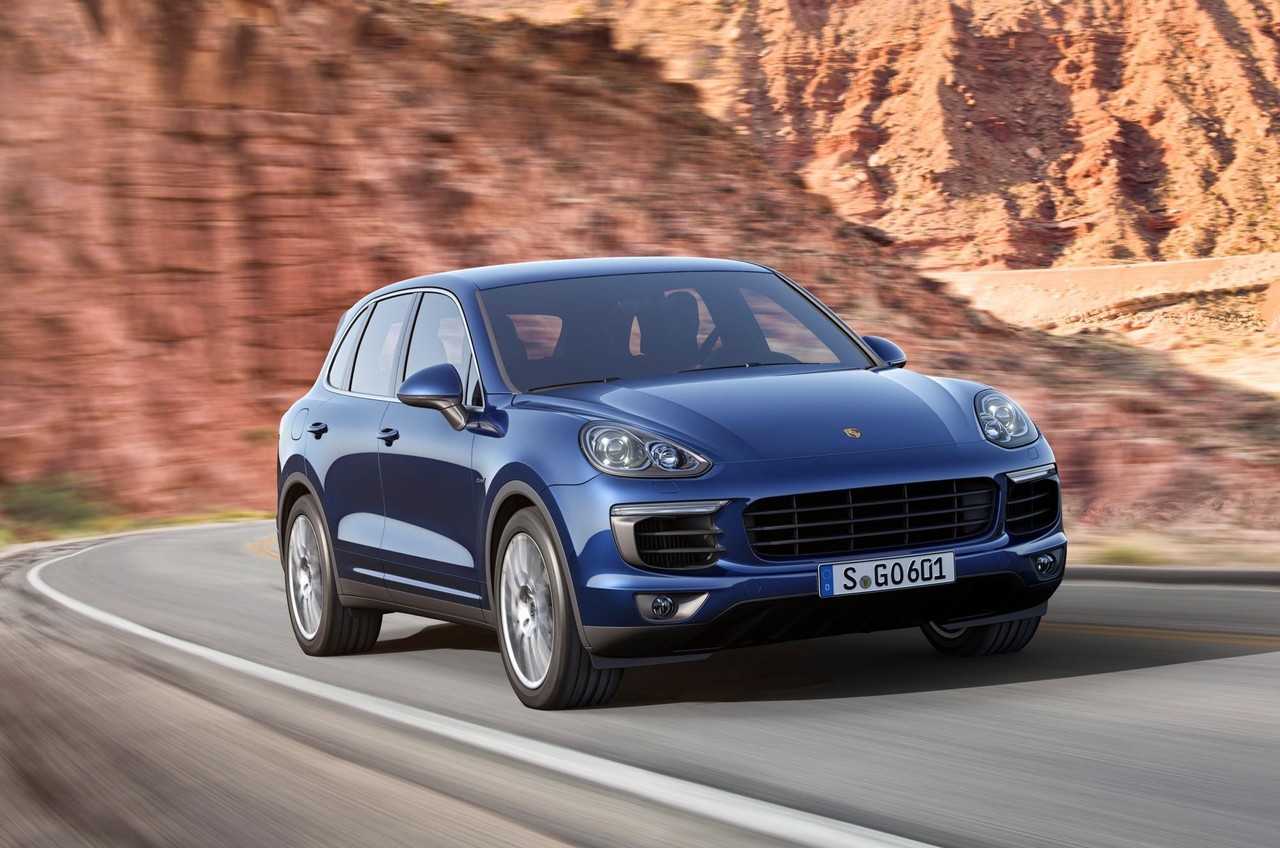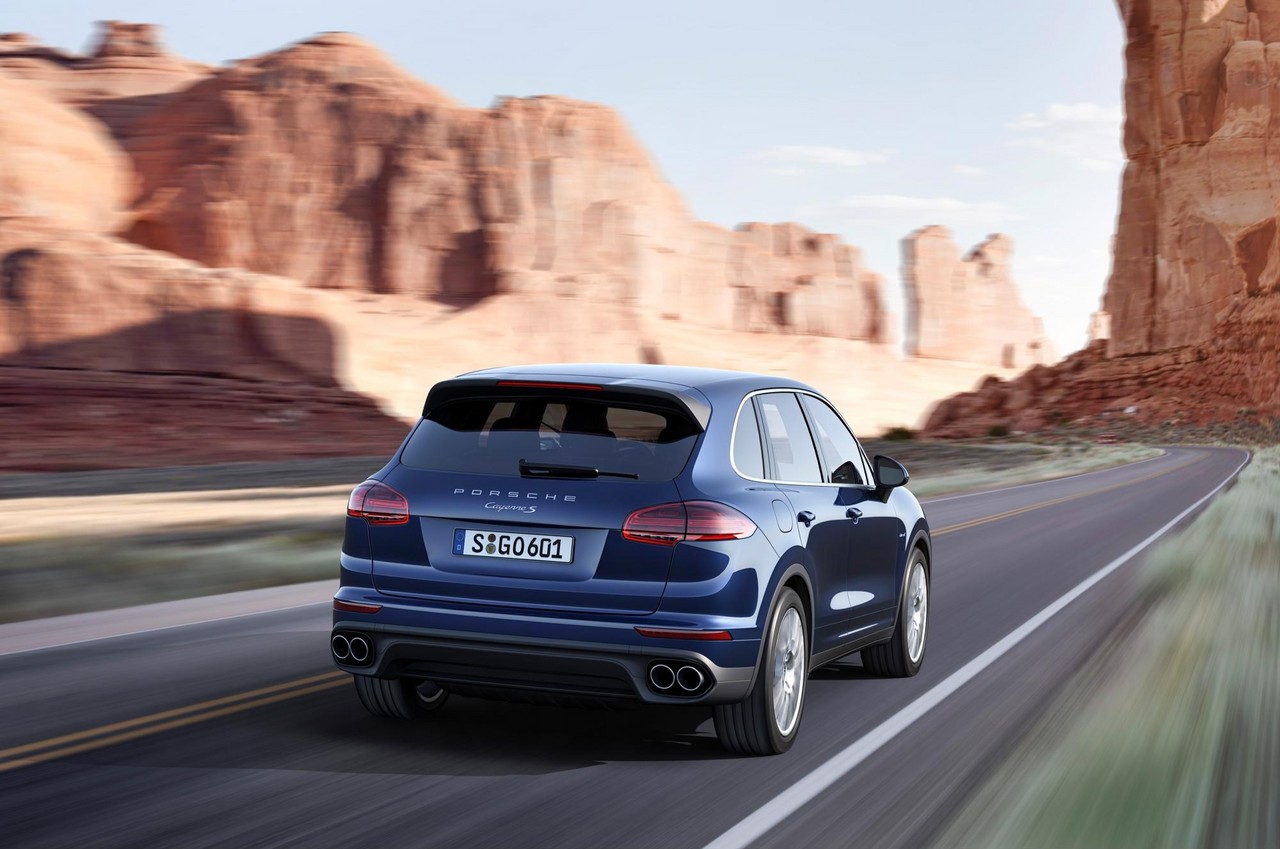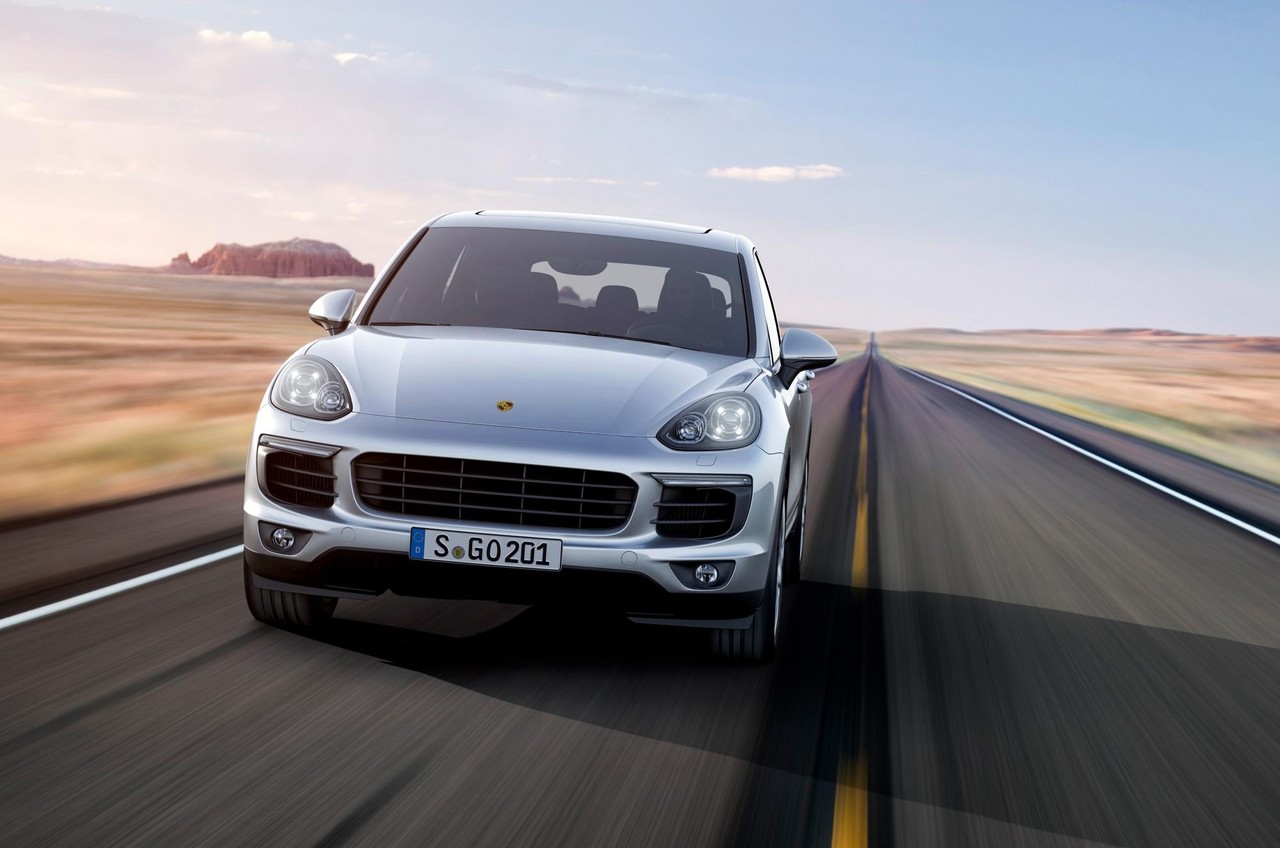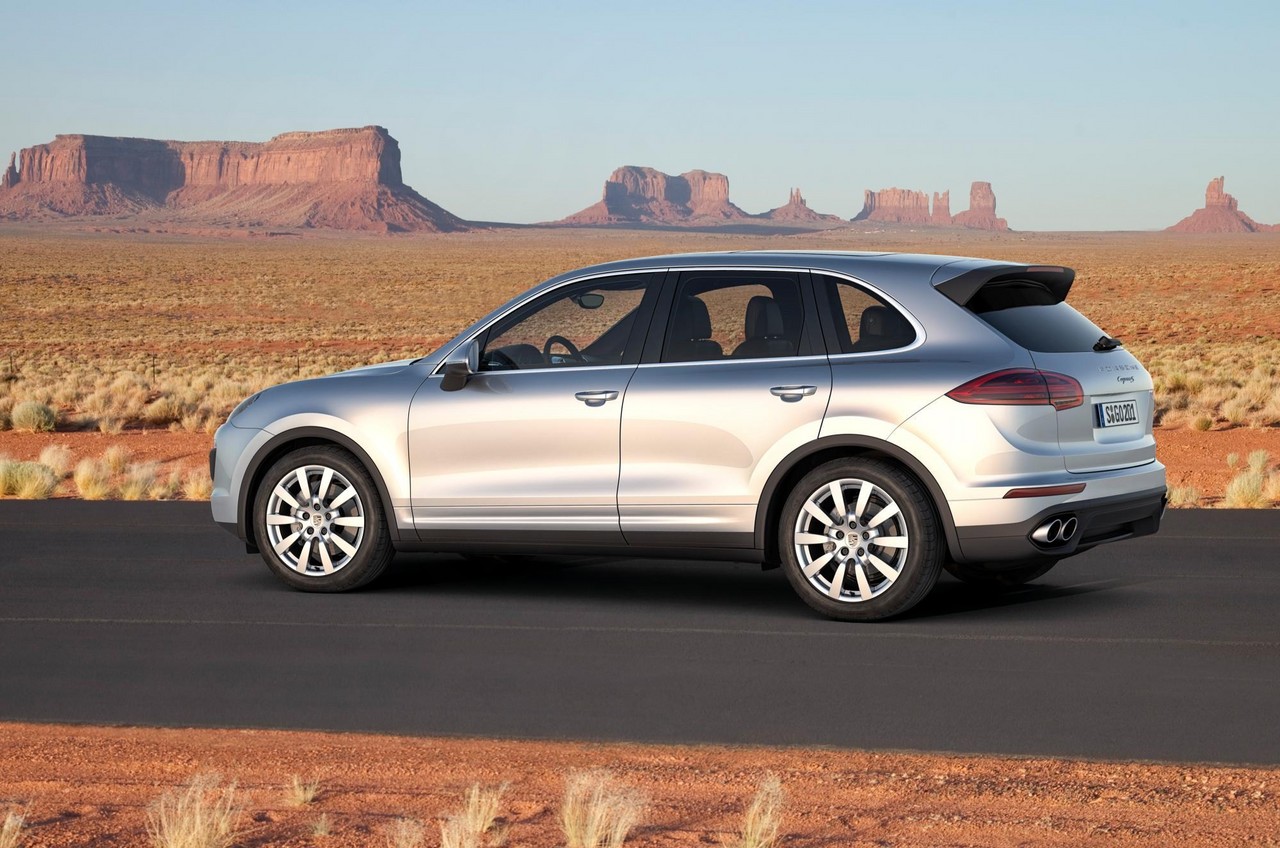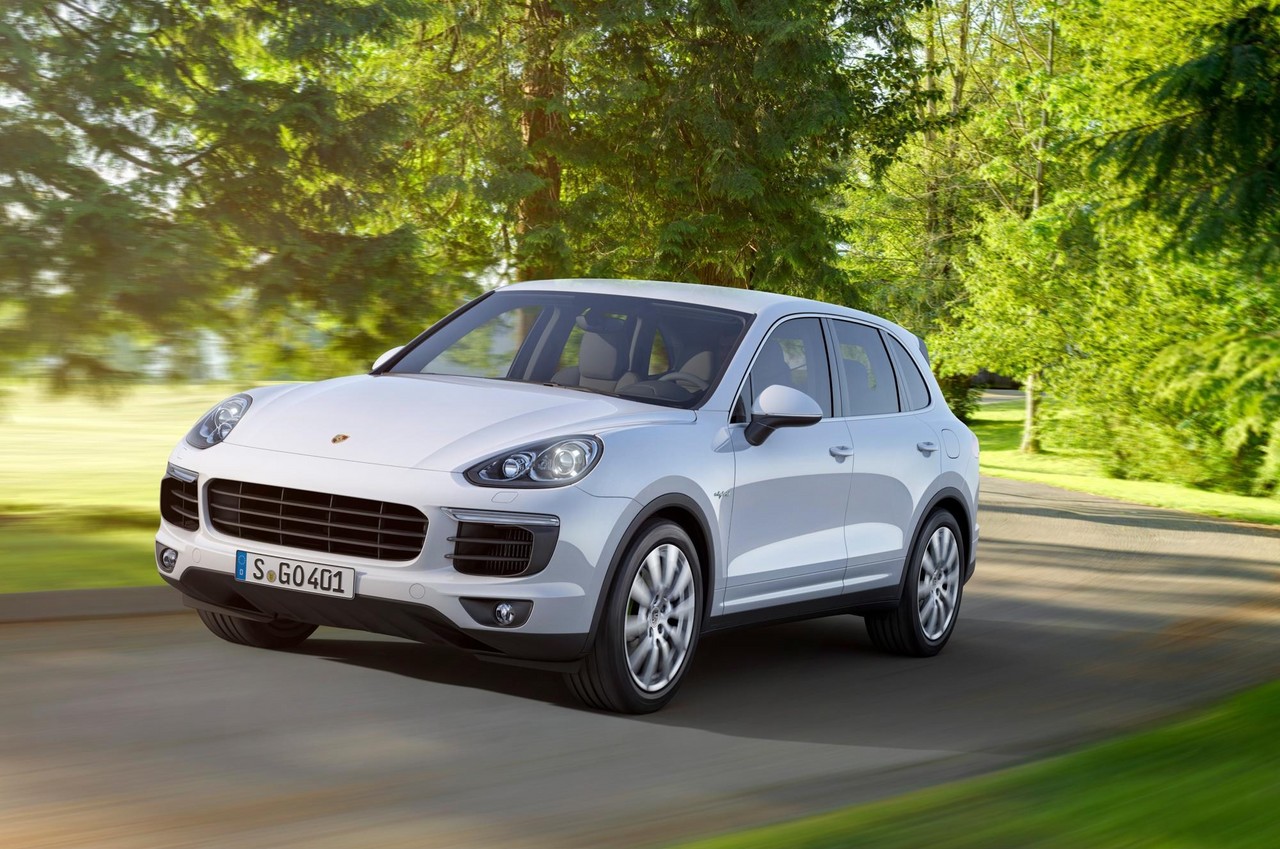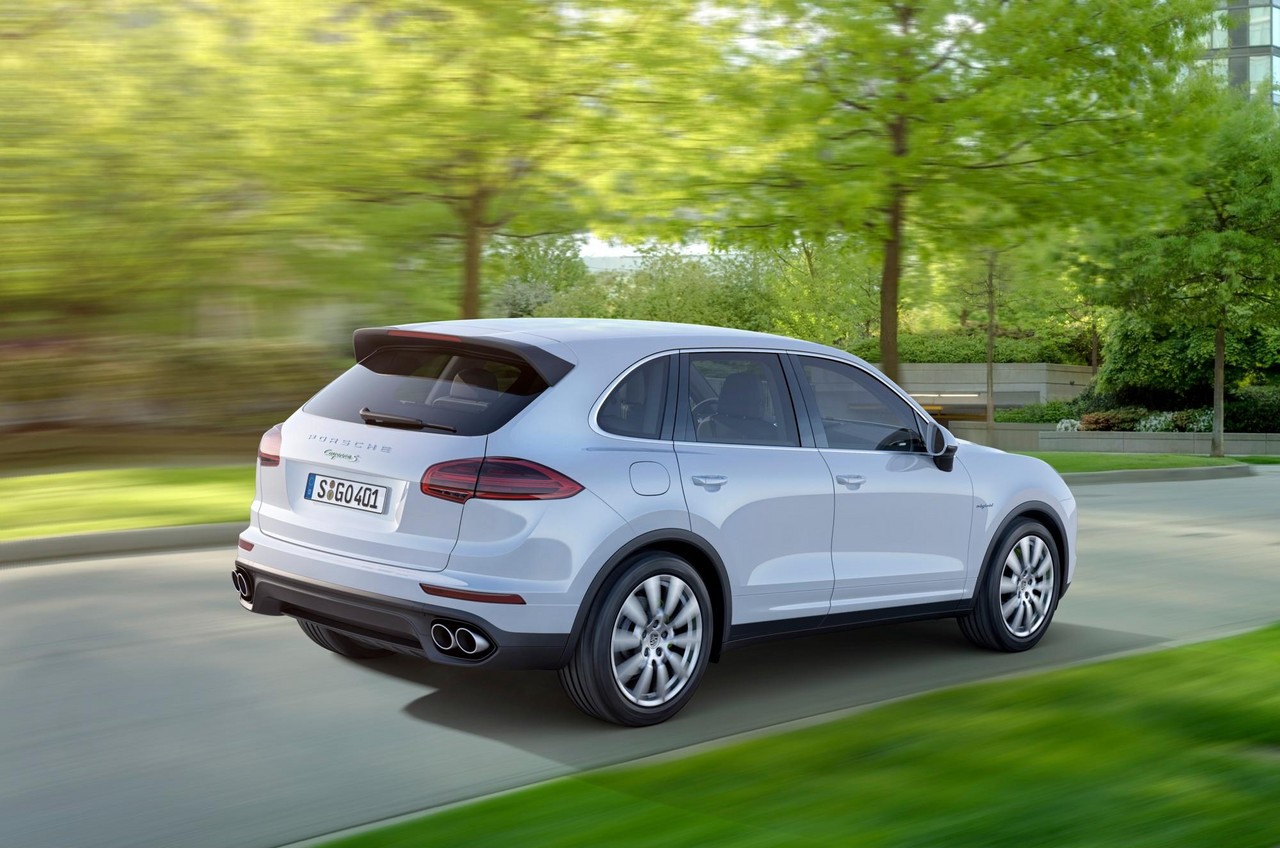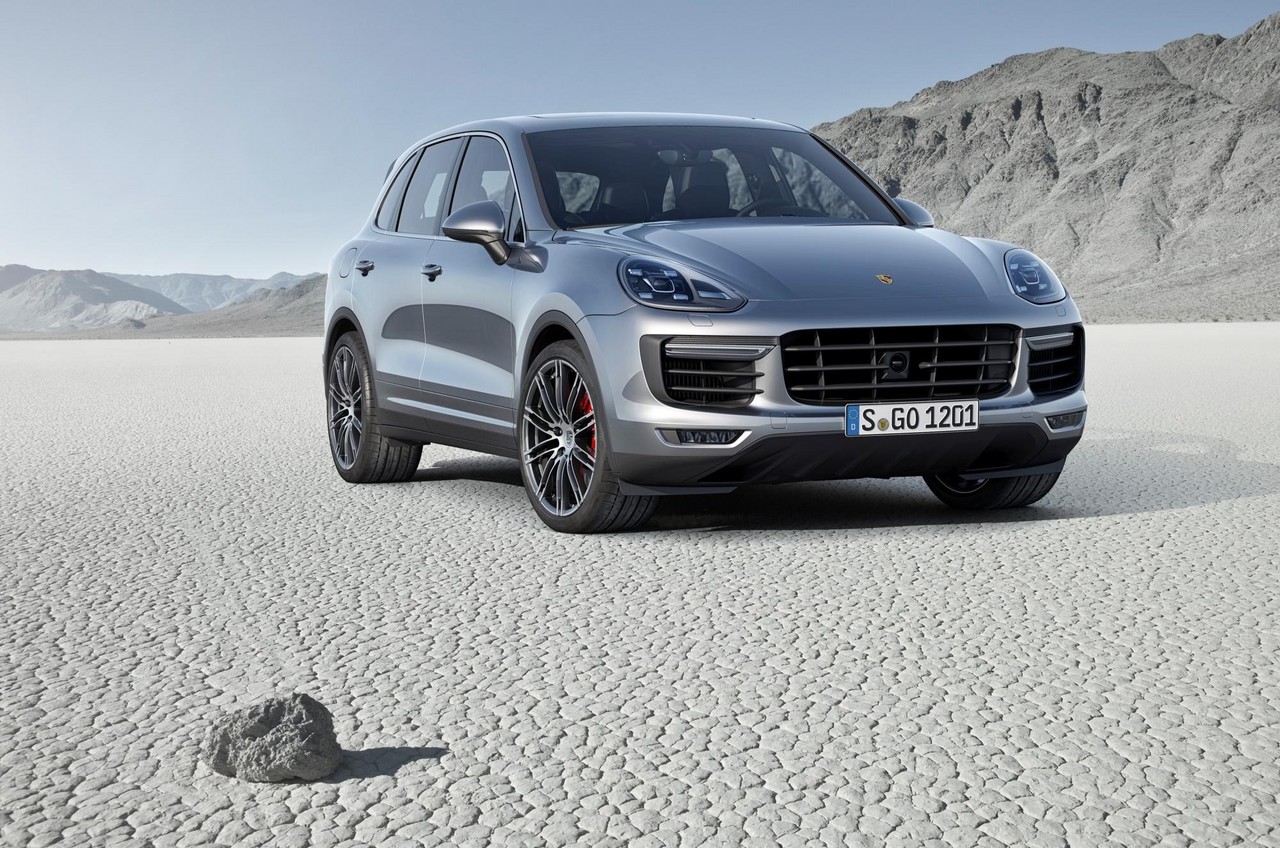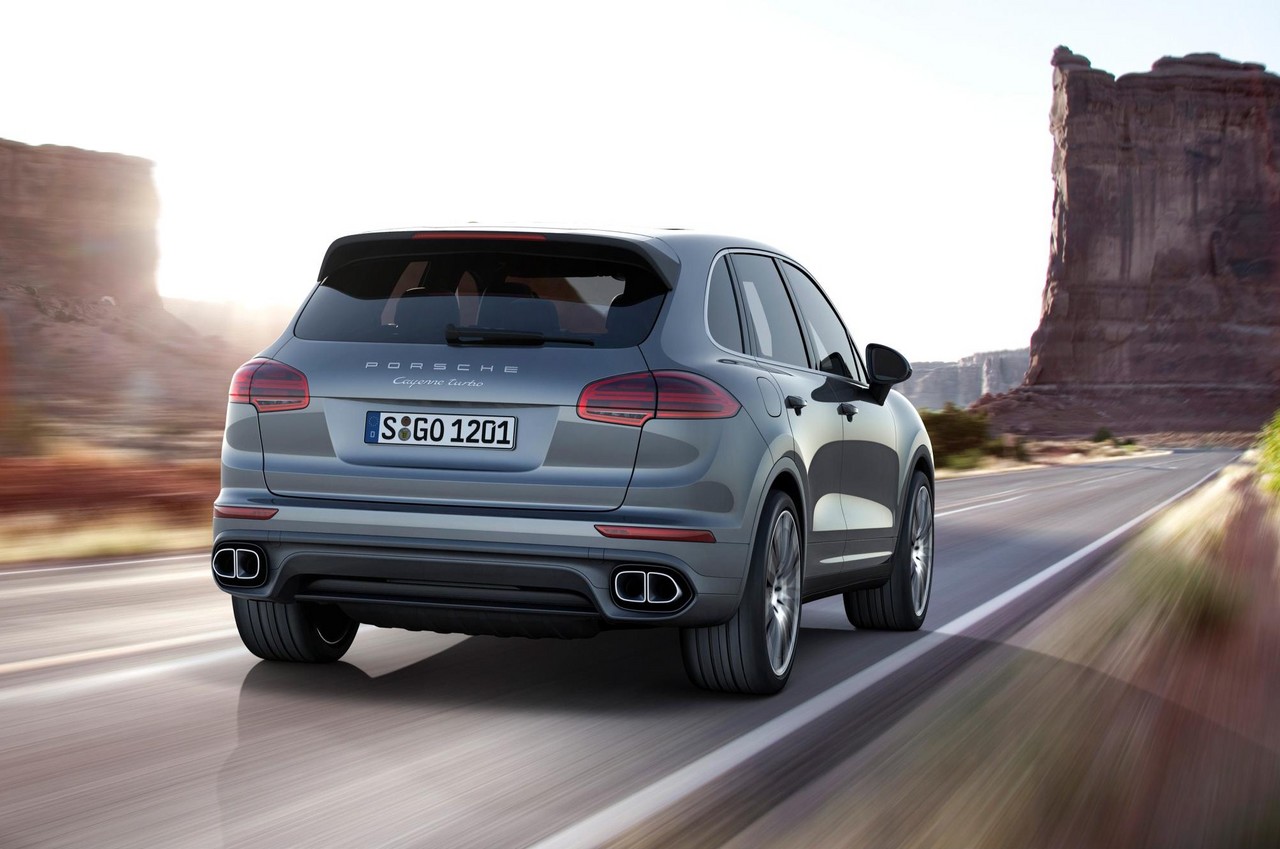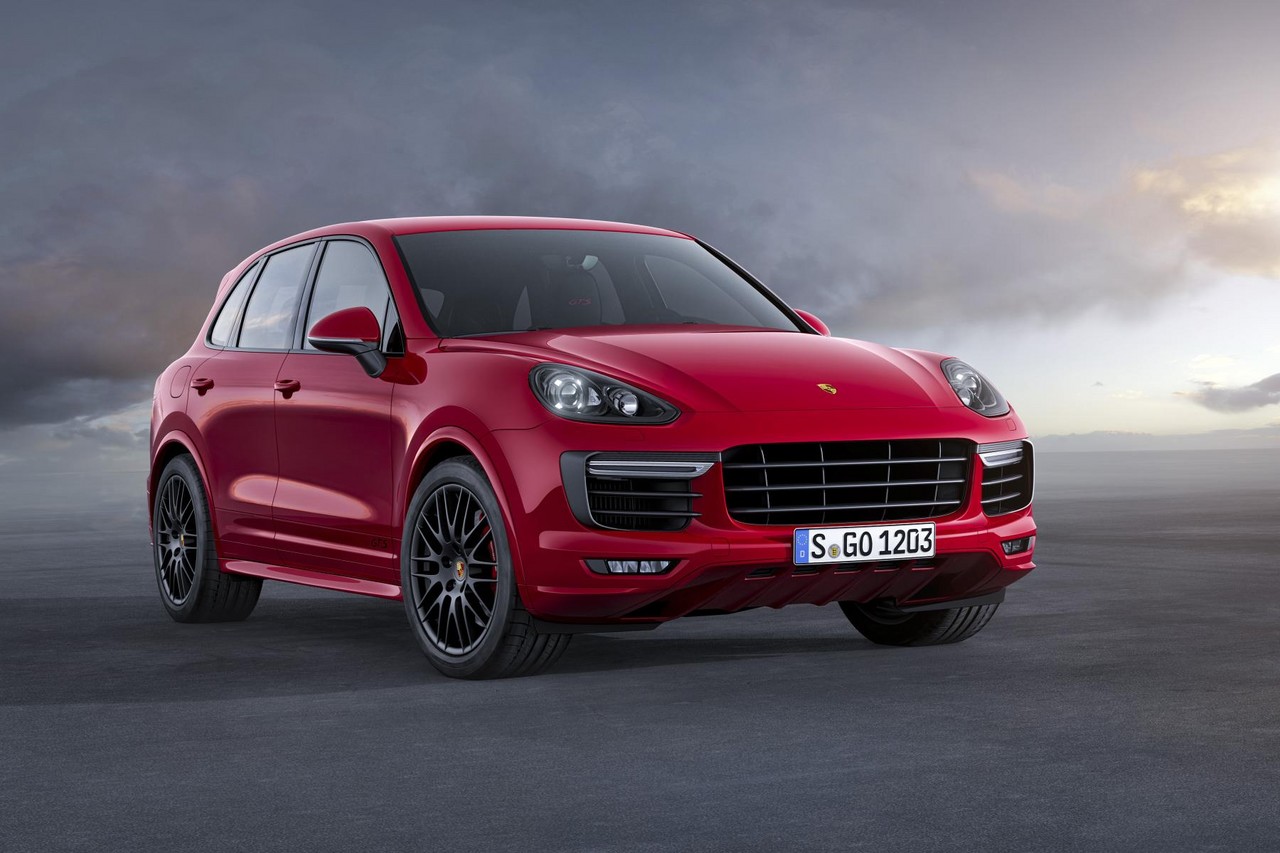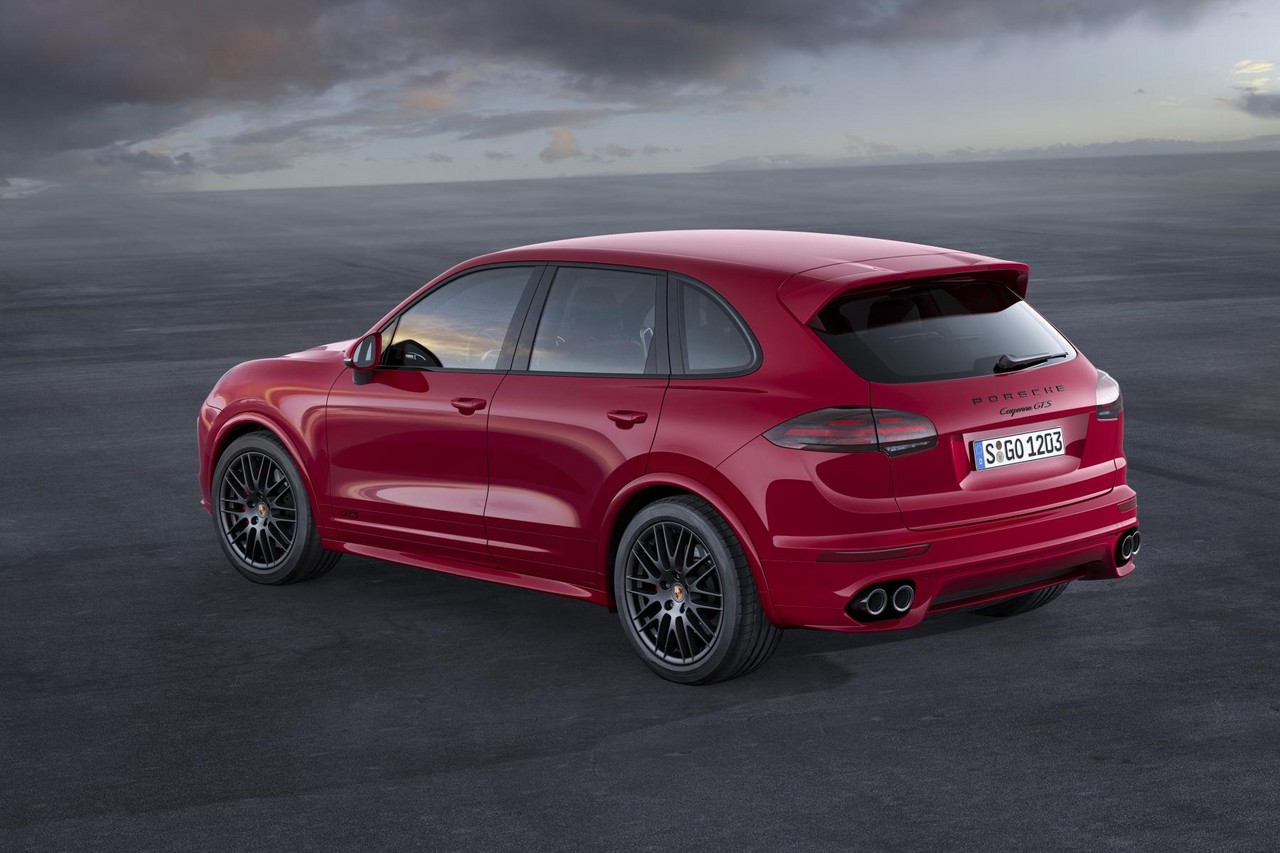
- Powerful V8 engines
- Excellent ride/handling balance
- High standard of interior fit and finish
- Well-weighted steering is accurate…
- … but lacks feel
- Underwhelming 3.6-litre V6 engine
- Speedometer is hard to read
- Limited resting space for left leg
- Second row legroom falls short of rivals
- High running, maintenance and repair costs
Review: Porsche 958 Cayenne (2010-14)
Overview
Released in July 2010, the Porsche Type 958 Cayenne was a large, four-wheel drive SUV. Manufactured in Leipzig, Germany, the 958 Cayenne range initially consisted of the Cayenne S, Cayenne S Hybrid and Cayenne Turbo, with the standard Cayenne and Cayenne Diesel following in August 2010. In September 2012, the range was expanded with the introduction of the GTS variant, with Turbo S and S Diesel variants following in April 2013.
All engines for the Mk.2 Cayenne featured ‘auto start-stop’, enabling the engine to shut down when the vehicle came to rest and restart when the driver released the brake. Combined with eight-speed ZF automatic transmissions, the Mk.2 Cayenne was significantly more fuel-efficient than the Mk.1 Cayenne .
Dimensions
Compared to its predecessor, the Mk.2 Cayenne was 48 mm longer (at 4846 mm), 11 mm wider (1939 mm), 6 mm taller (1705 mm) and had a 40 mm longer wheelbase (2895 mm). Despite this, the Mk.2 Cayenne was around 140 kg lighter than its predecessor (for comparable variants) due to greater use of aluminium, omission of a low-range transfer case and lightweight construction techniques.
Suspension
Jointly developed with the Volkswagen 7P Touareg , the Mk.2 Cayenne had double wishbone front suspension and multi-link rear suspension.
| Variant | Years | Engine | Trans. | Peak power | Peak torque |
|---|---|---|---|---|---|
| V6 | 2010-14 | 3.6-litre M55.02 petrol V6 | 8sp auto | 220 kW at 6300 rpm | 400 Nm at 3000 rpm |
| Diesel | 2010-11 | 3.0-litre M059 turbo-diesel V6 | 8sp auto | 176 kW at 4000-4400 rpm | 550 Nm at 2000-2250 rpm |
| 2011-14 | 3.0-litre CRC turbo-diesel V6 | 8sp auto | 180 kW at 4000-4400 rpm | 550 Nm at 2000-2250 rpm | |
| S Diesel | 2013-14 | 4.2-litre CUD twin-turbo diesel | 8sp auto | 281 kW at 3750 rpm | 850 Nm at 2000-2750 rpm |
| S | 2010-14 | 4.8-litre M48.02 petrol V8 | 8sp auto | 294 kW at 6500 rpm | 500 Nm at 3500 rpm |
| S Hybrid | 2010-14 | 3.0-litre CGE s/charged petrol V6 | 8sp auto | 245 kW at 5500-6500 rpm | 440 Nm at 3000-5250 rpm |
| Electric motor | 34 kW at 0-1150 rpm | 300 Nm at 0-1150 rpm | |||
| Combined: | 279 kW at 5500-6500 rpm | 580 Nm at 1000 rpm | |||
| GTS | 2012-14 | 4.8-litre CUR petrol V8 | 8sp auto | 309 kW at 6500 rpm | 515 Nm at 3500 rpm |
| Turbo | 2010-14 | 4.8-litre M48.52 twin-turbo petrol V8 | 8sp auto | 368 kW at 6000 rpm | 700 Nm at 2250-4500 rpm |
| Turbo S | 2013-14 | 4.8-litre M48.52 twin-turbo petrol V8 | 8sp auto | 405 kW at 6000 rpm | 750 Nm at 4500 rpm |
4WD system
The Cayenne Diesel and Cayenne S Hybrid were fitted with a permanent four-wheel drive system with a self-locking centre differential. In normal conditions, the system provided a 60:40 front/rear torque split. However, if a wheel on one of the axles started to spin, the difference in speed between the two axles would activate the self-locking centre differential, directing more torque to the axle with better traction
The all-wheel drive system for the Cayenne, Cayenne S and Cayenne Turbo utilised an electronically controlled multiple-plate clutch – integrated in the gearbox – to distribute torque between the front and rear axles in a fully variable manner. As such, there was no pre-determined torque split, with the Porsche Traction Management (PTM) system continually monitoring driving conditions to determine torque distribution.
Both systems also included an automatic brake differential which, if the drive wheels began to spin, would brake the individual wheel with the higher level of slip.
Safety equipment
Standard safety equipment for the 958 Caynne included dual front airbags, front side airbags, full-length curtain airbags, ABS, electronic brake force distribution, electronic stability control, traction control, trailer sway control, front and outer rear seatbelts with pretensioners and front seatbelt load limiters.
Brakes
The Cayenne and Cayenne Diesel had 350 mm front disc brakes with six-piston aluminium monobloc fixed-calipers and 330 mm rear discs with four-piston calipers. The S and S Hybrid were fitted with larger 360 mm front disc brakes, while the Turbo variant had special composite brake discs combining an aluminium cover and a grey cast-iron friction ring, with 390 mm front and 358 mm rear discs.
Features
Standard features for the Cayenne and Cayenne Diesel included 19-inch alloy wheels, eleven speaker sound system with a six-disc CD/DVD player, auxiliary inputs (3.5mm/USB/iPod) and MP3-compatibility, satellite navigation with a 4.8-inch TFT colour display, dual-zone climate control air conditioning, leather seats, eight-way power adjustable front seats with driver memory settings, cruise control, front fog lights, front and rear parking sensors, park assist display, Bluetooth connectivity, rain-sensing wipers, automatic headlights, 40/20/40 split and folding rear seat backrests, a leather-wrapped steering wheel with gearshift buttons, remote central locking, power windows and heated mirrors, power retracting mirrors, a height and reach adjustable steering wheel, power-operated park brake, 12 volt power outlets, cargo cover, privacy glass, a motion-sensing alarm and an immobiliser.
The S, S Diesel and S Hybrid variants were further equipped with 19-inch alloy wheels with adaptive air suspension, a fourteen speaker Bose sound system with 200-Watt active subwoofer, front seat four-way power lumbar adjustment, bi-xenon headlights, a power adjustable steering wheel, driver memory settings (seats, steering wheel, door mirrors) and a power-operated tailgate.
The GTS variants added 20-inch alloy wheels and the Porsche Active Suspension Management (PASM), a bumper system for active, infinite adjustment of the front and rear dampers; the driver could also select from ‘Comfort’, ‘Normal’ and ‘Sport’ drive modes. Inside, the GTS variants featured combination leather/alcantara trim.
Compared to the GTS, the Cayenne Turbo was fitted with adaptive front sports seats (with adjustable front seat bolsters), heated front and rear seats, directional bi-xenon headlights with washers, heated steering wheel, proximity key, tyre pressure monitoring, ambient lighting, power sunroof and alcantara headlining.
The Turbo S was distinguished by its 21-inch two-tone alloy wheels, two-tone leather upholstery, Sport Chrono Package (dash-top analogue and digital dials), carbon-fibre interior trim and high gloss black air intakes, headlight housings and mirror trims. The Turbo S was also fitted with:
- Porsche Dynamic Chassis Control (PDCC): PDCC utilised active anti-roll bars to respond to steering angle and lateral acceleration to provide a stabilising force that counteracted the swaying force of the chassis to minimise body roll; and,
- Porsche Torque Vectoring (PTV) Plus: integrated into the all-wheel drive management system, PTV Plus would engage the rear differential lock if one of the rear wheels began to spin, thereby directing torque to the opposite rear wheel.
Cayenne S Hybrid
The S Hybrid variant was fitted with a 34 kW electric motor between the engine and transmission which was powered by 1.7 kWh Sanyo-sourced nickel-metal batteries which powered the climate control, water and transmission pumps, braking and steering systems. Furthermore, the electric motor also had an energy recuperation mode in which the motor would recharge under braking.
The Cayenne S Hybrid could travel for short distances and at speeds of up to 60km/h in its all-electric ‘e-Power’ mode and could also shut-down the engine when coasting. The battery was also covered by a 300,000km or 12 year warranty (whichever expired first).
August 2011: Cayenne update
In August 2011, the Cayenne range underwent a minor update as the Diesel variant was fitted with a more powerful and fuel-efficient engine and modifications for the S Hybrid enabled the car to operate solely on electric power from cold starts. An optional ‘Powerkit’ was also introduced for the Panamera Turbo, increasing peak power and torque to 400 kW and 750 Nm, respectively.
Related links
- Brochure: Porsche 958 Cayenne (February 2010)
- Brochure: Porsche 958 Cayenne Turbo S (September 2012)
Review: Porsche 958 Cayenne (2014-17)
Overview
Released in Australia in November 2014, the updated Cayenne introduced more efficient and powerful engines. As per the table below, the Cayenne range initially consisted of Diesel, S, S Diesel, Turbo, Turbo S and S E-Hybrid variants, with the V6 and GTS following in early 2015. In addition to the new engines, the updated Cayenne featured Porsche’s ‘Auto Stop/Start Plus’ system which included a coasting function and the introduction of active cooling air flaps.
According to Porsche, the updated Cayenne could be identified by its ‘sharper design with precise lines and purposefully-placed angles intended to catch the light’. At the front, this design featured a new front mask (including the headlights, bonnet and air blades) and front wheel arches. At the rear, there were new tail-lights, new exhaust pipes which were integrated into the lower bumper, and the number plate recess and boot handle were revised to be better integrated within the tailgate.
Inside, the updated Cayenne had a new multi-function sports steering wheel – with gearshift paddles as standard – and more comfortable rear seats.
Cayenne S E-Hybrid
Whereas the Cayenne S Hybrid had a 1.7 kWh nickel-metal hydride battery, the Cayenne S E-Hybrid had a 10.8 kWh lithium-ion battery which provided an electric-17ly driving range of 18 to 36 km. The S E-Hybrid was sold with a 3.6 kW charger as standard, while an integrated 7.2 kW charger that could recharge the battery twice as fast (around 90 minutes from complete discharge) was available as an option.
| Variant | Engine | Trans. | Years | Peak power | Peak torque |
|---|---|---|---|---|---|
| Diesel | 3.0-litre turbo-diesel V6 | 8sp auto | 2014-17 | 193 kW at 4000 rpm | 580 Nm at 1750-2500 rpm |
| V6 | 3.6-litre petrol V6 | 8sp auto | 2015-17 | 220 kW at 6300 rpm | 400 Nm at 3000 rpm |
| S | 3.6-litre twin-turbo petrol V6 | 8sp auto | 2014-17 | 309 kW at 6000 rpm | 550 Nm at 1350-4500 rpm |
| GTS | 3.6-litre twin-turbo petrol V6 | 8sp auto | 2015-17 | 324 kW at 6000 rpm | 600 Nm at 1600-5000 rpm |
| S Diesel | 4.2-litre twin-turbo diesel | 8sp auto | 2014-17 | 283 kW at 3750 rpm | 850 Nm at 2000-2750 rpm |
| S E-Hybrid | 3.0-litre s/charged petrol V6 | 8sp auto | 2014-17 | 245 kW at 5500-6500 rpm | 440 Nm at 3000-5250 rpm |
| Electric motor | 70 kW | N/A | |||
| Combined: | 306 kW at 5500 rpm | 590 Nm at 1250-4000 rpm | |||
| Turbo | 4.8-litre twin-turbo petrol V8 | 8sp auto | 2014-17 | 382 kW at 6000 rpm | 750 Nm at 2250-4500 rpm |
| Turbo S | 4.8-litre twin-turbo petrol V8 | 8sp auto | 2014-15 | 405 kW at 6000 rpm | 750 Nm at 2250-4500 rpm |
| 2015-17 | 419 kW at 6000 rpm | 800 Nm at 2500-4500 rpm | |||
Features
Standard features for the Cayenne V6 and Diesel were extended to include bi-xenon headlights with daytime LED running lights, a reversing camera, steering wheel gearshift paddles, kerbside tilting of the door mirrors on reverse, electrochromatic door and rear view mirrors, and brake pad monitoring.
Beyond this, the Cayenne S and S Diesel added 20-inch alloy wheels, adaptive air suspension, a fourteen speaker Bose sound system with active subwoofer, four-way power lumbar adjustment for the front seats, heated front seats, directional headlights, a power adjustable steering wheel, power-operated sunroof, driver memory settings (seats, steering wheel, door mirrors) and a power-operated tailgate.
The Cayenne S E-Hybrid was further equipped with Porsche Active Suspension Management (PASM) with selectable Comfort, Sport and Sport Plus settings.
Relative to the S E-Hybrid variant, the Cayenne GTS featured front sports seats, Alcantara seat trim and Alcantara headlining. The Cayenne Turbo was distinguished by its leather seats, adjustable front seat bolsters, heated rear seats, LED headlights, heated steering wheel, proximity key (i.e. keyless entry), and remote and push-button starting.
The Cayenne Turbo S continued to be differentiated by its 21-inch two-tone alloy wheels with 295/35 R21 tyres, two-tone leather upholstery, Sport Chrono Package (dash-top analogue and digital dials), carbon-fibre interior trim and high gloss black air intakes, headlight housings and mirror trims. Similarly, the post-November 2014 Cayenne Turbo S was also fitted with Porsche Dynamic Chassis Control (PDCC) and Porsche Torque Vectoring (PTV) Plus.
From February 2015, the Cayenne Turbo S had a more powerful 4.8-litre twin-turbo V8 petrol engine which produced peak power and torque of 419 kW and 800 Nm, respectively.
Related links
